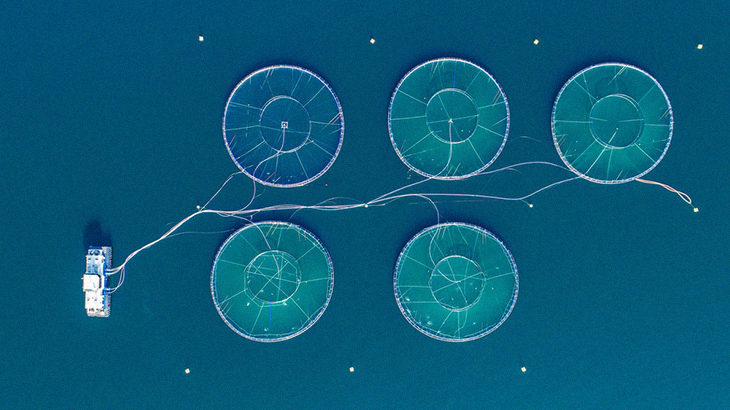As many people work on making their diets better, they opt to cut down on red meat. They resort to fish because they say that this is a good and healthy option. However, the sustainability of eating fish has been called into question time and again, and more so in the last few years. Hence, health experts have chosen to look into the health claims and arguments for and against eating fish. They’ve also decided to explore alternatives for it.

There are many out there that consider fish to be a healthy alternative to red meat. Fish is a good source of protein, omega-3 and omega-6 fatty acids, and other minerals and vitamins. The omega-3 fatty acids, which, as studies have shown, can have a good impact on heart health. This form of nutrient can be found in high concentrations in oily fish, such as salmon and mackerel.
The research they’ve made has shown how these fatty acids can help promote better blood flow to the brain, and as we know, this is crucial for delivering oxygen that is essential for brain function. In fact, a study has suggested that omega-3s plays a big role in healthy brain aging.
More than that, including fish in the diet may also help fight inflammation. A recent study discovered how regular consumption of fish helped lower or altogether avoid the incidence of chronic inflammatory conditions. This may even be good to the body’s the immune system.
Medical News Today talked to Kate Cohen, MS, RDN, for the Ellison Clinic at Providence Saint John’s Health Center in Santa Monica, CA, about the science behind eating sustainable fish. Do these claims make sense, and this was what she said, “Fish and shellfish are the main sources in our diet of the polyunsaturated fats, DHA [docosahexaenoic acid] and EOA [eicosapentaenoic acid], which are associated with brain development in pregnancy and linked to a number of potential overall health benefits.”
However, it also must be noted that not all fish are equal. She further explained, “Cold-water fish have a higher amount of fat to keep the fish warm in icy waters, but this also loads the fish with beneficial omega-3 and omega-6 fatty acids.”
Choose Wisely and Practice Care
When it comes to eating fish, there have been concerns about the high levels of mercury in some of these cold-water creatures. However, there are suitable options as well, and those are with high concentrations of beneficial fatty acids and low mercury levels. Examples are wild salmon, sardines, rainbow trout, and Atlantic mackerel.
The question now is, what of white fish and shellfish? These contain less calories when compared to oily fish. While they do not contain high levels of omega-3, these are considered a good source of lean protein and many minerals and vitamins, among which iron, zinc, and vitamins A, B12, and D. Cohen actually recommended including fish in diet. He says you can eat them 2 to 3 times weekly in order to enjoy the benefits. However, he also advised that you “rotate your fish. Your body needs all the different vitamins and minerals available in fish, so don’t stick with just one kind.”
Wild-Caught Fish Sustainability
There are stark images of waste, environmental pollution, and bycatch (catching a species of fish or marine species unintentionally), including marine mammals, turtles, and seabirds everyone. These photos have had many people question the health benefits of fish and seafood. Are these worth the environmental costs?
The Marine Stewardship Council (MSC) is the organization that sets standards for sustainable fisheries all over the world. Then, there are other organizations such as Monterey Bay Aquarium Seafood Watch fulfilling a similar role in the United States alone. The MSC refutes the claim people make about the fact that there is no such thing as sustainable fishing. They have outlined three principles practiced by sustainable fisheries: sustainable fish stocks, minimizing environmental impacts, and effective fisheries management.
The MSC stated how “fish stocks can recover and replenish if they are managed carefully for the long-term.” Its website includes a list of fish that are sustainable when they carry the MSC label.
In the U.S., the Washington-based Environmental Working Group (EWG) goes further, giving a regularly updated list of fish that are both healthy — in terms of contaminant levels — and sustainable. Similar information is listed on the U.S. government’s Fishwatch.
Josep Lloret, Director of Oceans and Human Health Chair at the University of Girona, Spain, does concur with sustainable fishing. He believes that is possible but challenging and stated, “Artisanal (small scale) fisheries are seen as the most sustainable, but even these have their own environmental footprints, such as the impact on vulnerable species due to selectivity issues.”
“Marine Protected Areas (MPAs) can be effective if they are well implemented and well managed. However, many MPAs around the world lack a proper management plan,” he further stated.
The good news is that according to the European Environment Agency, the North-East Atlantic Ocean and Baltic Sea are showing some signs of recovery. However, all is not fine and dandy yet. Many believe that further collective action is much needed in order to regain healthy commercial fish and shellfish populations, particularly in European waters. In the US, some stocks have partially recovered because of the careful management of fisheries. This has happened despite the overfishing in the seas.
As Lloret said, “Seafood is a healthy option compared to meat, but if we follow doctors’ recommendations of omega-3 fatty acid intake, with the expected rise of the human population, we will very quickly deplete our seas.”
Alternatives to Take
So, if wild fish stocks cannot supply the amount of fish needed for people to have the optimal intake of fatty acids, where can the fish come from? There is an obvious alternative to wild-caught fish, and this is through fish farming, or aquaculture. There are no issues with the bycatch here. In fact, the fish costs cheaper, the supply becomes more reliable, and most importantly, there bad effects on wild habitats aren’t as stark.
Now, is farmed fish as tasty or is wild-caught fish just more delicious? “It really comes down to what the fish eats and its environment,” said Cohen. “Farmed salmon, for example, can have about 40% more calories than wild salmon and about 50% more fat — which is a pretty huge difference.”
Cohen also said that “there is also a greater risk of contaminants in farm-raised fish that are kept in small, enclosed pens, as well as antibiotic exposure from the farms’ attempts at disease prevention.”
Then, there is the concern about the food that these farmed fish take into their system. Josep Lloret explained, “Farmed fish have several problems, including the need for forage fish to feed them (then the forage fish get overexploited), compared to land, we raise ‘lions’ at sea (predators, such as sea bass, that consume a lot of forage fish), [and there is] impact on sea bottoms because of pollution.”
Concerns Regarding Pollution
There is a way to minimize pollution, and this is by combining different types of aquaculture. The details of which are outlined in a 2020 report made by the Food and Agriculture Organization of the United Nations (FAO). They say that if fish farmers grow an extractive species, such as filter-feeding mussels, near fish pens, the mussels are able to eliminate the waste from the habitat. These mussels are bivalves that are a nutrient-rich, low-mercury seafood themselves.
Organizations, such as the Aquaculture Stewardship Council, push the idea of responsible aquaculture. They do this by providing certification for farms that meet their rigid standards. They perform independent inspections to make this possible. In fact, fish farming organizations are considering several alternatives to fish-based feeds. They have thought of soy, canola, and seaweed, all of which are packed with the omega-3s that fish need.
Fish Without the Fish
Then, there are those that stay away from fish altogether. It is either because they dislike it, are alleric to it, or are vegetarians or vegans for ethical rationales. Cohen had an explanation to this. He said that fish are the best source of DHA and EPA. There are other marine foods as an option. They can choose to eat algae or seaweed. Omega-3s are also present in grass-fed beef and eggs from chickens, particularly those that include flaxseed in their diet.
These vegetarian and vegan alternatives are readily available. They also do not have sustainability issues at all. But do these have the same nutritional benefits as real fish? Food producer Novish, a company that makes plant-based fish sticks, nuggets, and burgers, states that their products that are now available through multinational seafood chain Nordsee, do not have soy or artificial additives in them. To give the fishy taste, they flavor their different food brands with seaweed and algae.
Cohen also gave some advice to consumers when it comes to buying fish alternatives. He said to check these carefully. He stated, “Try to avoid plant-based alternatives to fish that involve multiple mysterious ingredients since it’s ultimately just processed food.“ The Good Food Institute Europe (GFI), an organization that is an advocate to alternative proteins, has set in motion a sustainable seafood initiative to promote plant-based, cultivated, and fermentation-derived alternatives. The institute said that “companies are able to turn plant ingredients into end products that create the sensory experience and nutritional profile of conventional seafood.”
Grown in the Laboratory
Most manufacturers make plant-based “fish” into products. There is, though a new development in the works. They call this cell culture. The process requires growing fish in the lab from cells. This system create fish fillets that don’t come with bones or scales. Unfortunately, it isn’t available in the market yet because the study is still in its early stages.
US food producers Wildtype and BluNalu are both working on the new process and the products that can come from it. BluNalu claims they will “be free of harmful levels of mercury, pathogens, parasites, microplastics, and other environmental contaminants,” and they will “have the same taste, texture, and performance as conventional seafood in all cooking and preparation methods.”
The GFI also added, “Though not yet commercially available, cultivated seafood is identical to conventional seafood at a cellular level — but is free from mercury, heavy metals, and antibiotics.”
However, Cohen is not convinced: “There is no clinical data about the comparison in nutrients between real fish and fish created in a laboratory. My hope is that we will put more energy into improving sustainable farming and fishing practices to continue addressing environmental concerns and putting fish on everyone’s table.”
Health and Sustainability
At the end of the day, is fish really worth eating? Yes, because the nutrients found in them are important. Nonetheless, there are also other sources for these if you are worried about its sustainability issues. At the end of the day, the key to living a healthy life is to make sure that your diet incorporates a variety of sources. Cohen said that there is more to just about fish. He explained, “Research has shown that diets that incorporate these healthy fats — like the Mediterranean Diet — are associated with positive health outcomes. Aim for a whole-food diet whenever possible.”
Hence, if you want to include fish in your diet, it’s best that you are responsible about it. Read the label carefully to see if it comes from a sustainable source. Then, choose cold-water oily fish if you want something with the best health benefits in terms of practicing a balanced and diverse diet.



